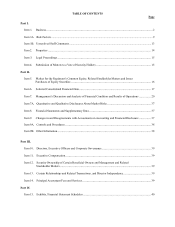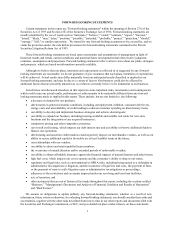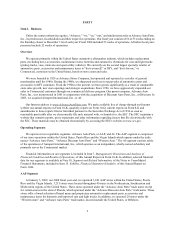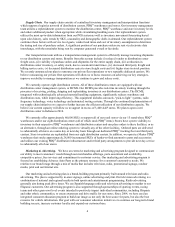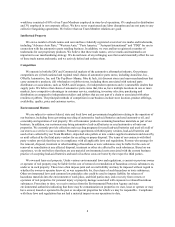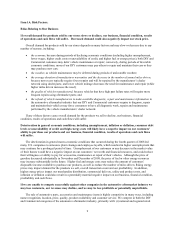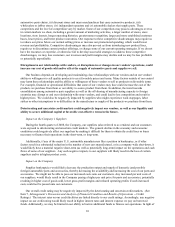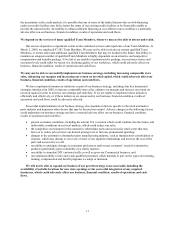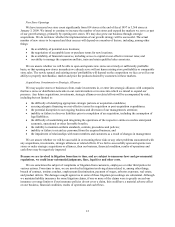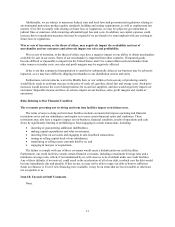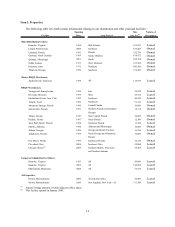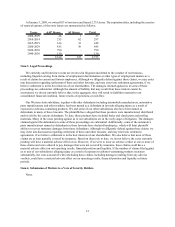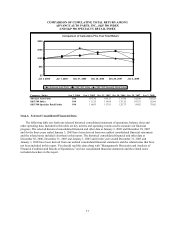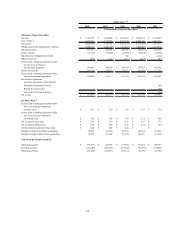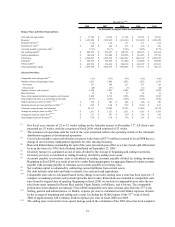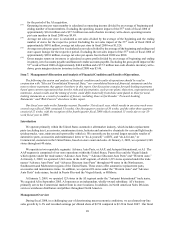Advance Auto Parts 2008 Annual Report Download - page 24
Download and view the complete annual report
Please find page 24 of the 2008 Advance Auto Parts annual report below. You can navigate through the pages in the report by either clicking on the pages listed below, or by using the keyword search tool below to find specific information within the annual report. 10
automotive parts chains, (ii) discount stores and mass merchandisers that carry automotive products, (iii)
wholesalers or jobber stores, (iv) independent operators and (v) automobile dealers that supply parts. These
competitors and the level of competition vary by market. Some of our competitors may possess advantages over us
in certain markets we share, including a greater amount of marketing activities, a larger number of stores, store
locations, store layouts, longer operating histories, greater name recognition, larger and more established customer
bases, lower prices, and better product warranties. Our response to these competitive disadvantages may require us
to reduce our prices below our normal selling prices or increase our promotional spending, which would lower
revenue and profitability. Competitive disadvantages may also prevent us from introducing new product lines,
require us to discontinue current product offerings, or change some of our current operating strategies. If we do not
have the resources or expertise, or otherwise fail to develop successful strategies to address these competitive
disadvantages, we may lose customers, our revenues and profit margins may decline and we may be less profitable
or potentially unprofitable.
Disruptions in our relationships with vendors, or disruptions in or changes in our vendors' operations, could
increase our cost of goods sold and/or affect the supply of automotive parts and supplies we sell.
Our business depends on developing and maintaining close relationships with our vendors and on our vendors'
ability or willingness to sell quality products to us at favorable prices and terms. Many factors outside of our control
may harm these relationships and the ability or willingness of these vendors to sell us products on favorable terms.
For example, financial or operational difficulties that some of our vendors may face could increase the cost of the
products we purchase from them or our ability to source product from them. In addition, the trend towards
consolidation among automotive parts suppliers as well as the off-shoring of manufacturing capacity to foreign
countries may disrupt or end our relationship with some vendors, and could lead to less competition and result in
higher prices. We could also be negatively impacted by suppliers who might experience work stoppages, labor
strikes or other interruptions to or difficulties in the manufacture or supply of the products we purchase from them.
Deteriorating and uncertain credit markets could negatively impact our vendors, as well as our liquidity and
ability to secure additional capital at favorable cost-effective terms in the future.
Impact on the Company’s Suppliers
During the fourth quarter of 2008, the Company, our suppliers (also referred to as vendors) and our customers
were exposed to deteriorating and uncertain credit markets. The general decline in the economy and economic
conditions could negatively affect our suppliers by making it difficult for them to obtain the credit lines or loans
necessary to finance their operations in the short-term, or long-term.
Additionally, if any of the major U. S. automobile manufacturers files a petition in bankruptcy, or if other
factors result in a substantial reduction in the number of new cars manufactured, or in a company-wide shut-down, it
would likely have a material negative short-term (as well as potentially long-term) impact on the operations and cash
flows of some of our suppliers. Any such negative impacts to our suppliers will likely result in the loss of certain
suppliers and/or in higher product costs.
Impact on the Company
Supplier bankruptcies would likely decrease the production output and supply of domestic (and possibly
foreign) automobile parts and accessories, thereby decreasing the availability and increasing the cost of our parts and
accessories. We might not be able to pass our increased costs onto our customers. Any increased per unit costs of
our suppliers, would likely result in the Company paying a higher per unit price for parts and accessories, potentially
resulting in higher cost of goods sold, lower gross profit margins and reduced operating profits if such increased
costs could not be passed onto our customers.
Our overall credit rating may be negatively impacted by the deteriorating and uncertain credit markets. (See
Item 7., Management’s Discussion and Analysis of Financial Condition and Results of Operations -- Credit
Ratings.) The interest rates on our credit facilities are linked directly to our credit ratings. Accordingly, any negative
impact on our credit rating would likely result in higher interest rates and interest expense we pay on borrowed
funds. Additionally, we may be limited in our ability to borrow additional funds to finance our operations. In light of


